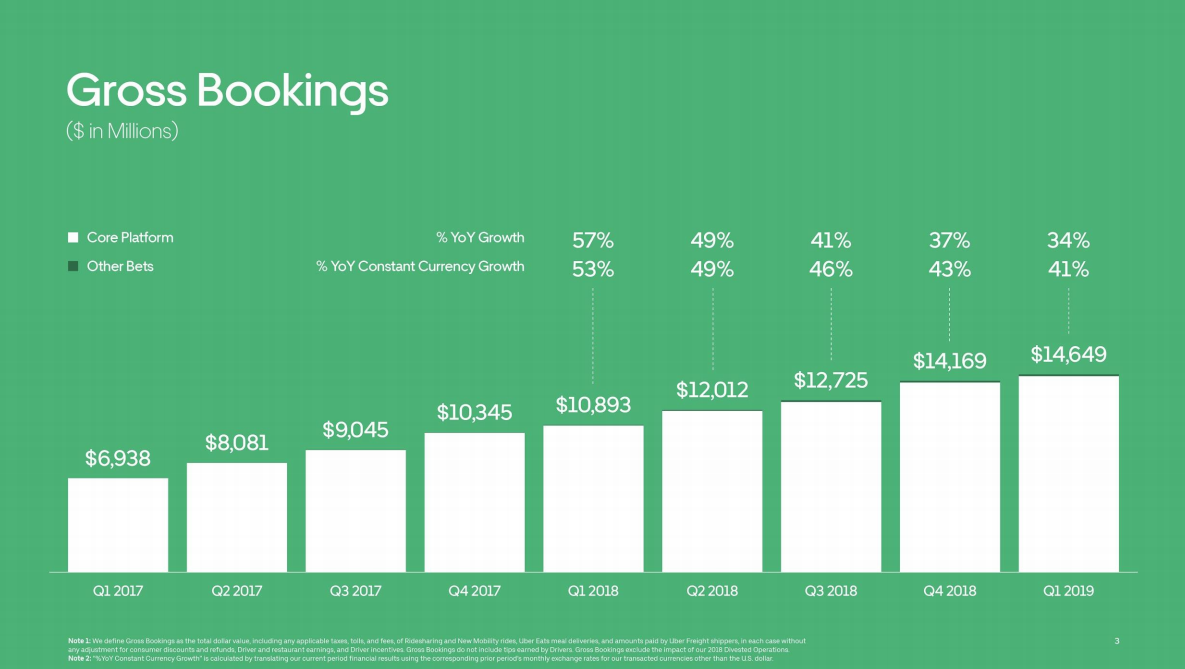Uber’s ride-hailing business is growing more slowly than its newer bets. In Uber’s Q1 2019 earnings, the company reported gross bookings growth of 230 percent for its other bets, while ridesharing grew just 22 percent compared to the same quarter last year.
Gross bookings are the revenue earned minus things like taxes, tolls, fees, wages paid to drivers, restaurants and so forth.
Other bets, with gross bookings of $132 million for Q1 2019, includes freight and new mobility, which entails bikes and scooters. Uber did not break out specifics for new mobility, but Uber CEO Dara Khosrowshahi said on an investor conference call that gross bookings for new mobility “grew strong quarter over quarter.”
Meanwhile, Eats continues to be a revenue driver for Uber, with gross bookings growth of 108 percent to $3.07 billion.

Slowing growth of Uber’s core business is to be expected. At TC Disrupt last year, Khosrowshahi said ride-hailing will make up less than 50 percent of Uber’s business transactions.
from TechCrunch https://tcrn.ch/2EJtddD
via IFTTT
Comments
Post a Comment